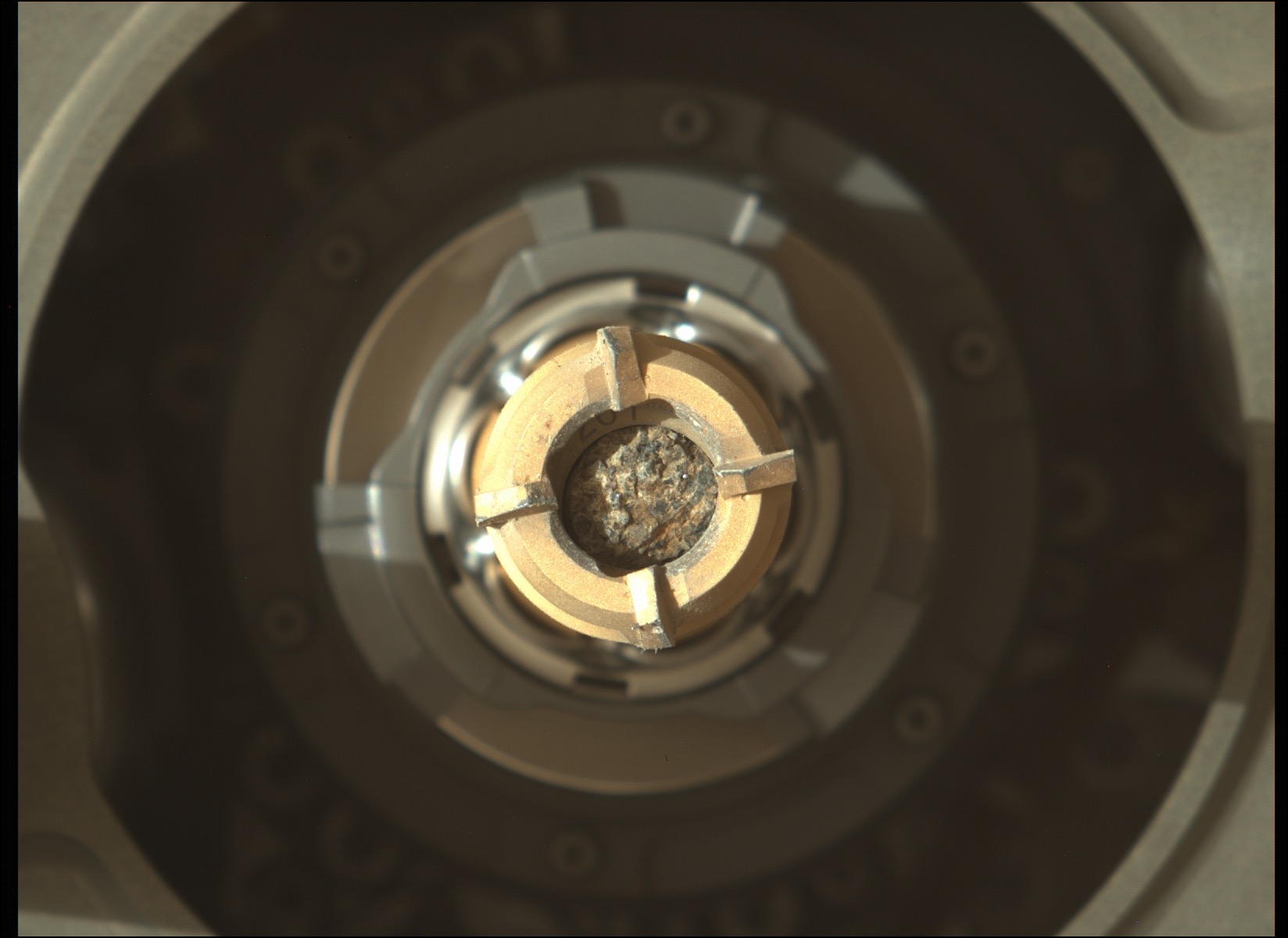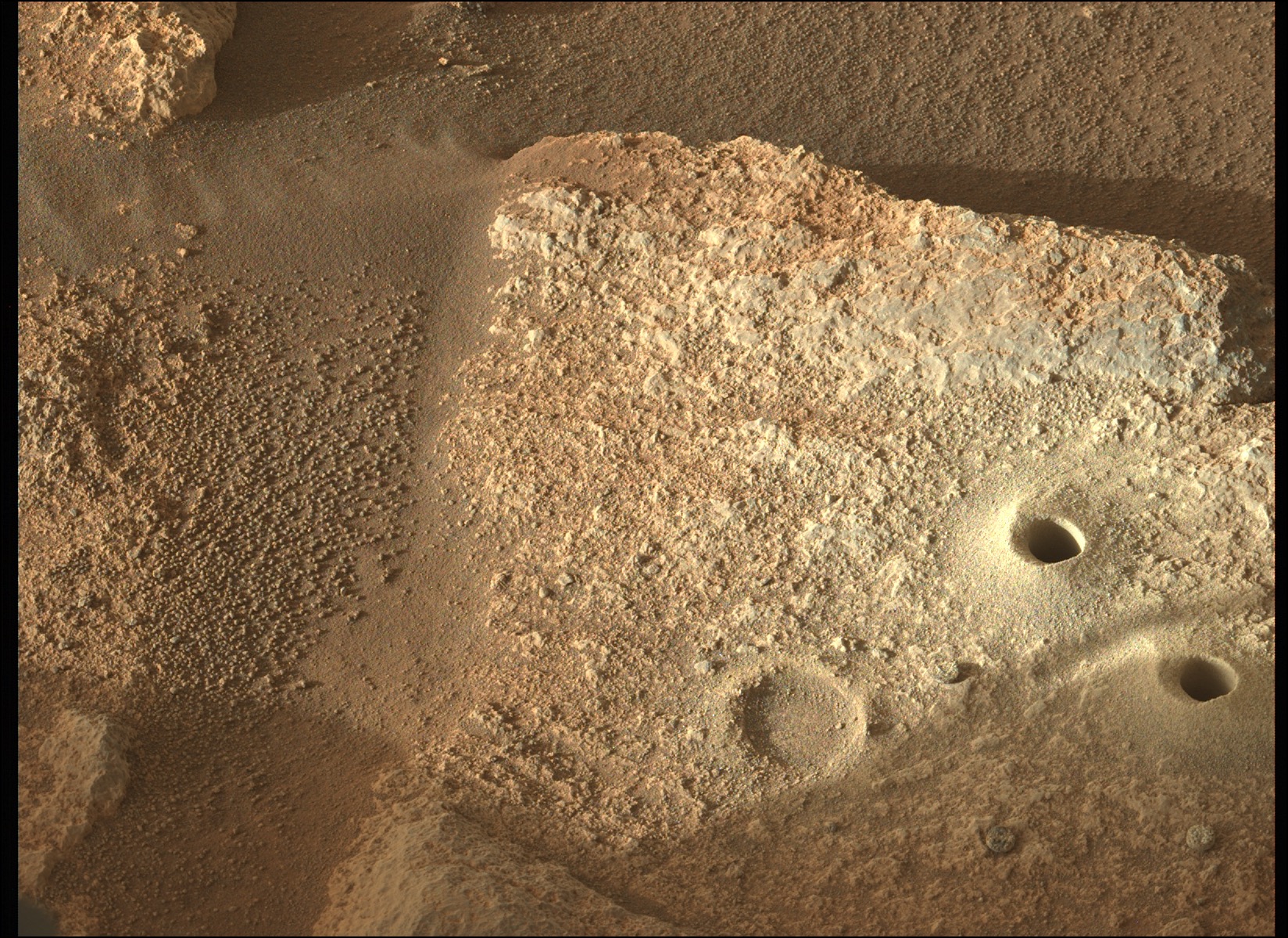
NASA's Mars rover Perseverance has snagged a sample to replace the material that got stuck in its throat.
Perseverance drilled into a rock called Issole on Dec. 29, 2021, collecting its sixth cored sample since touching down inside the Red Planet's Jezero Crater last February. But the car-sized rover couldn't seal up the titanium tube as planned, a problem the mission team soon traced to a few meddlesome pebbles clogging up Perseverance's sample-handling system.
Perseverance dumped the rock core out in mid-January and shook the pebbles free last week. Those activities cleared the way for the next sample-collecting effort, which the six-wheeled robot just pulled off back at Issole.
Related: Where to find the latest Mars photos from the Perseverance rover

"This rock almost looked surprised that I was coming back! Thankfully, I was able to collect another sample here to replace the one I discarded earlier. This may be one of the oldest rocks I sample, so it could help us understand the history of this place. #SamplingMars," mission team members wrote Monday (Jan. 31) via Perseverance's official Twitter account.
The Twitter post included photos of poor pockmarked Issole and a shot of the newly collected rock core.
Gathering such samples is one of Perseverance's two main mission goals, along with searching for signs of past Mars life inside Jezero. The mission team aims to ultimately collect several dozen samples, which will be returned to Earth, perhaps as early as 2031, by a joint NASA-European Space Agency campaign.
Get the Space.com Newsletter
Breaking space news, the latest updates on rocket launches, skywatching events and more!
Jezero is a great place to do such work, scientists and NASA officials have said, because the crater harbored a lake and a river delta billions of years ago. Petrified remnants of that delta still exist on Jezero's floor, and the mission team is eager to explore and sample those ancient pieces.
Perseverance has already begun making long-distance observations of the delta to help prepare for those activities, rover team member Eleni Ravanis wrote in a blog post on Monday. But the rover won't start trekking there just yet, added Ravanis, who's a Perseverance student collaborator at the University of Hawai'i at Mānoa. It will first study a nearby site known as Rimplas and may also drill a few cores in the area, including from Roubion, the first Red Planet rock that Perseverance tried to sample. That attempt, in August 2021, failed because the rock unexpectedly crumbled to bits when the rover drilled into it.
"These decisions, as all decisions on a mission as complex and ambitious as Mars 2020, will be a tradeoff between sols (the Martian days we'll spend) and the expected science return," Ravanis wrote, referring to the official name of Perseverance's mission.
"We'll then begin a multi-[kilometer] drive aimed at reaching the delta as soon as possible. Along the way, science observations may include investigations of the craters we pass throughout our journey to the delta," Ravanis added. "This could be particularly useful for understanding the sequence of events at Jezero Crater, which may be revealed in exposures along the crater walls."
Mike Wall is the author of "Out There" (Grand Central Publishing, 2018; illustrated by Karl Tate), a book about the search for alien life. Follow him on Twitter @michaeldwall. Follow us on Twitter @Spacedotcom or on Facebook.
Join our Space Forums to keep talking space on the latest missions, night sky and more! And if you have a news tip, correction or comment, let us know at: community@space.com.

Michael Wall is a Senior Space Writer with Space.com and joined the team in 2010. He primarily covers exoplanets, spaceflight and military space, but has been known to dabble in the space art beat. His book about the search for alien life, "Out There," was published on Nov. 13, 2018. Before becoming a science writer, Michael worked as a herpetologist and wildlife biologist. He has a Ph.D. in evolutionary biology from the University of Sydney, Australia, a bachelor's degree from the University of Arizona, and a graduate certificate in science writing from the University of California, Santa Cruz. To find out what his latest project is, you can follow Michael on Twitter.









